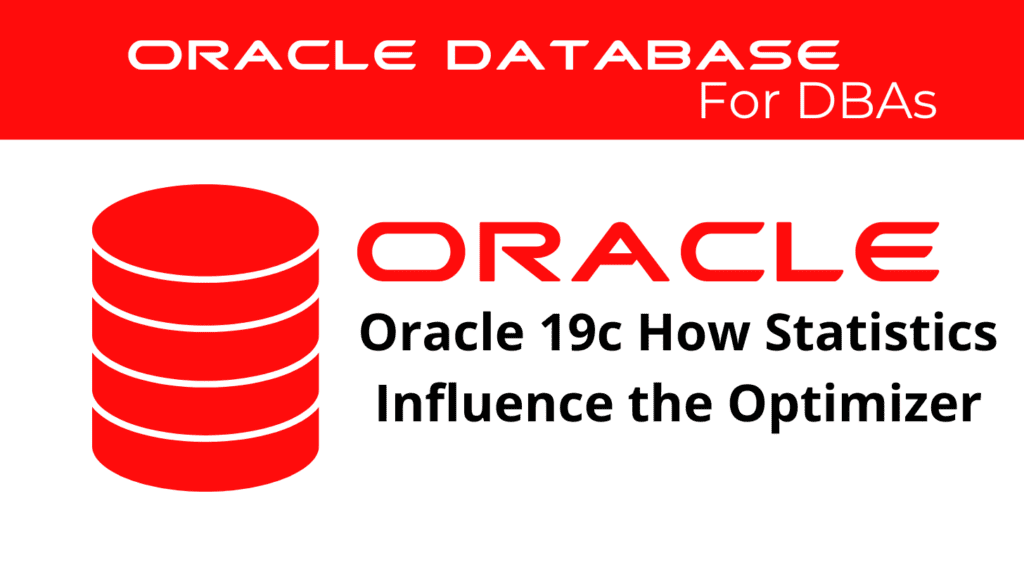
Understanding how statistics influence the Oracle optimizer is crucial for database administrators aiming to enhance database performance. In Oracle 19c, the role of statistics is pivotal in determining the most efficient execution plans. Let’s explore how statistics affect the Oracle optimizer and their overall influence on Oracle performance.
How Statistics Affect Oracle Optimizer
Statistics are essential for the Oracle optimizer as they provide vital information about the data distribution within the tables. The optimizer uses this information to decide the most cost-effective way to execute a query. For instance, statistics influence whether to use an index scan or a full table scan. Accurate statistics ensure that the optimizer chooses the best path, thereby improving query performance.
The Oracle optimizer relies heavily on statistics to evaluate different execution plans. Without accurate statistics, the optimizer might choose a suboptimal plan, leading to poor performance. Regular updates of statistics are necessary to maintain their accuracy, especially after significant changes in the data. For example, after a bulk data load, the existing statistics might no longer represent the true state of the data, which could mislead the optimizer into choosing inefficient query plans.
Oracle optimizer – Influence of Statistics on Oracle Performance
The influence of statistics on Oracle performance is profound. When statistics are up-to-date, the optimizer can make more informed decisions, leading to faster query execution times. This results in overall improved database performance. Conversely, outdated or missing statistics can cause the optimizer to make poor choices, resulting in slower queries and degraded performance. Therefore, DBAs must prioritize the regular collection and updating of statistics as part of their routine maintenance activities.
For example, when a table grows significantly in size, the old statistics might not reflect the current data distribution. This mismatch can lead to inefficient execution plans. Therefore, it’s crucial to gather statistics regularly, ensuring they represent the current state of the data. This can be done through scheduled jobs that automatically collect and refresh statistics, ensuring the optimizer always has accurate information.
📢 You might also like: Oracle 19c: Configuring Parameters to Influence the Optimizer (Category: Performance Management and Tuning)
Oracle optimizer – Maintaining and Gathering Statistics
Maintaining statistics involves regularly gathering and refreshing them to reflect changes in the database. Oracle 19c provides various automated tools to help DBAs manage statistics efficiently. The DBMS_STATS package, for instance, offers procedures to gather, modify, and restore statistics. It allows DBAs to gather statistics at various levels, such as for individual tables, schemas, or the entire database, providing flexibility in managing the statistics collection process.
BEGIN
DBMS_STATS.GATHER_TABLE_STATS('SCHEMA_NAME', 'TABLE_NAME');
END;
The above example demonstrates how to gather statistics for a specific table. Using the DBMS_STATS package ensures that the optimizer has the latest information, enabling it to make better decisions. Additionally, DBAs can use other options within the DBMS_STATS package to fine-tune the statistics collection process, such as specifying the degree of parallelism or choosing to collect histograms.
Advanced Statistics Gathering Techniques
Oracle 19c introduces several advanced techniques for statistics gathering that can further enhance optimizer performance. For instance, incremental statistics collection allows for more efficient gathering of statistics on partitioned tables by only updating the statistics for modified partitions, rather than the entire table. This can save significant time and resources, especially in large databases.
Another useful feature is the ability to gather statistics on a subset of data, which can be beneficial when working with very large tables. By using sampling methods, DBAs can collect representative statistics without having to process the entire table, thus speeding up the statistics gathering process.
Best Practices for Optimizing Statistics
To ensure the optimizer functions at its best, follow these best practices for managing statistics:
- Regularly Gather Statistics: Schedule regular jobs to gather statistics using DBMS_STATS. Ensure that the frequency of these jobs aligns with the rate of data change in your database to keep statistics up-to-date.
- Monitor and Analyze Performance: Regularly monitor the performance and identify queries that perform poorly. Use tools like AWR (Automatic Workload Repository) reports to identify potential issues related to statistics.
- Use Histograms Wisely: Implement histograms for skewed data distributions to help the optimizer understand data variance. Histograms provide more detailed data distribution information, allowing the optimizer to make better decisions, particularly for columns with highly skewed data.
- Leverage Oracle Features: Utilize Oracle’s automatic statistics gathering features to reduce manual intervention. Features like Automatic Statistics Gathering can help ensure that statistics are kept up-to-date with minimal manual effort.
By adhering to these practices, you can significantly improve the performance of the Oracle optimizer, leading to better database efficiency. It’s also important to stay informed about new features and improvements in statistics gathering introduced in newer Oracle versions, as these can offer additional benefits and optimizations.
Conclusion
In conclusion, statistics play a critical role in influencing the Oracle optimizer. Accurate and up-to-date statistics enable the optimizer to choose the most efficient execution plans, thereby enhancing overall database performance. Regular maintenance of statistics and adherence to best practices are essential for optimizing the performance of Oracle databases. By understanding the importance of statistics and implementing effective management strategies, DBAs can ensure that their databases perform optimally, providing faster query responses and better overall user experience.
See more on Oracle’s website!
Be Oracle Performance Management and Tuning Certified Professional, this world is full of opportunities for qualified DBAs!





